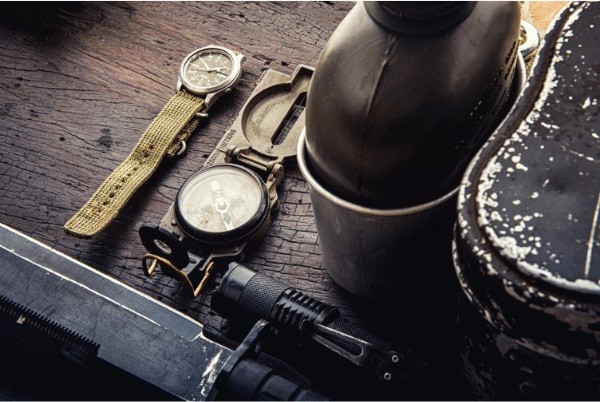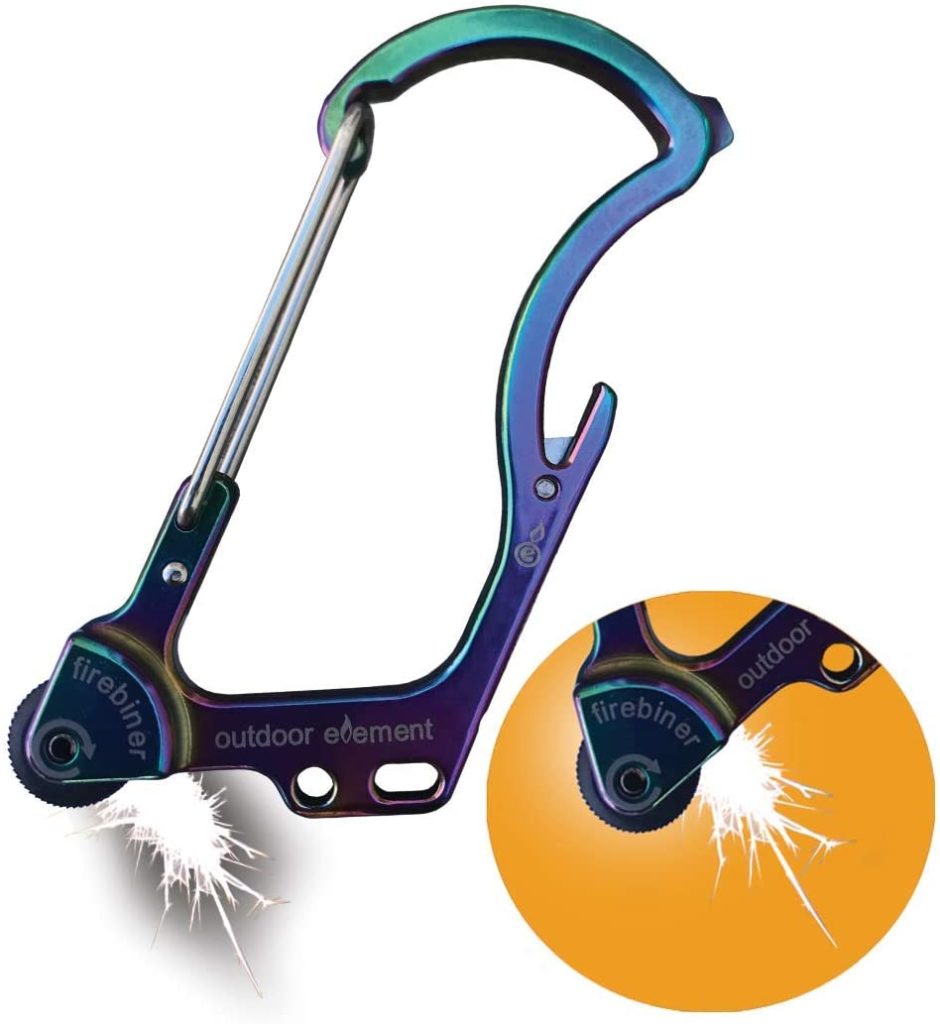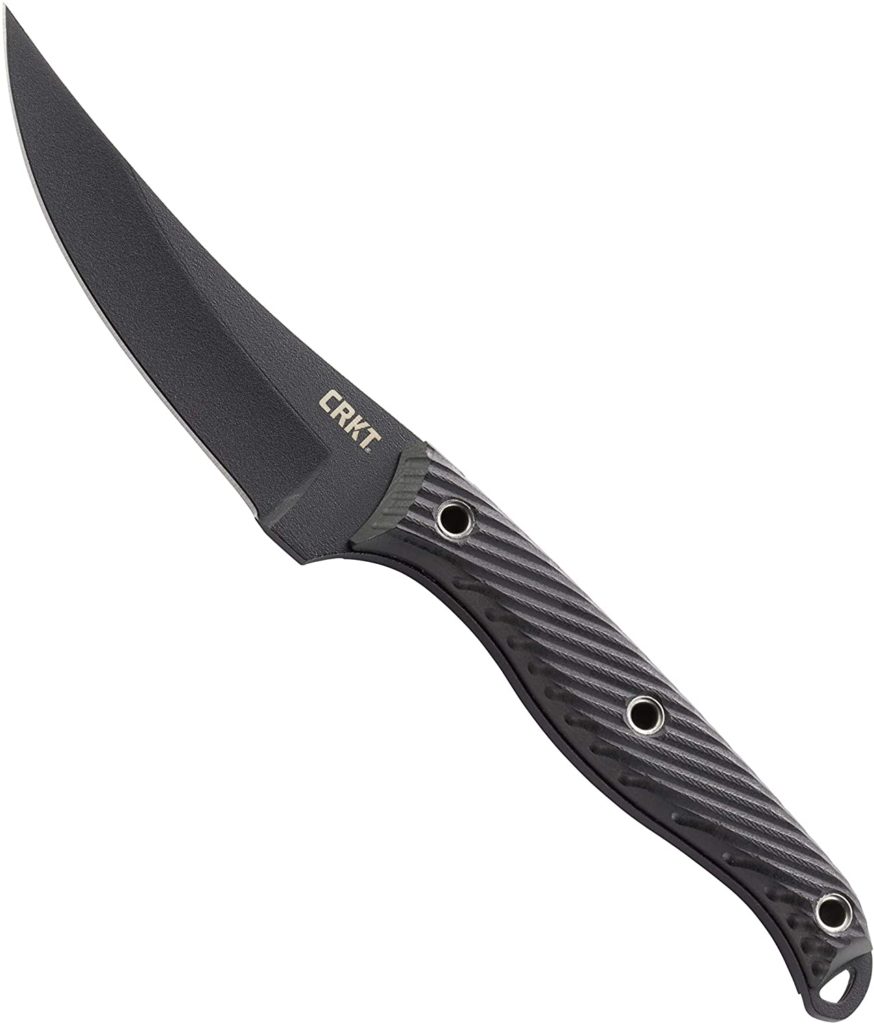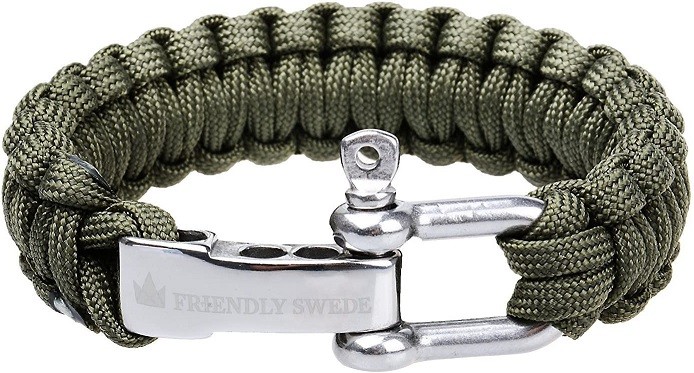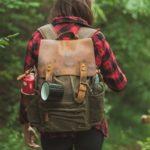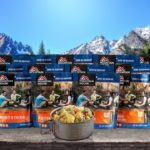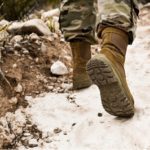It is often said that we hope for the best and prepare for the worst. And when preparing for emergencies, this means planning for contingencies. Whether you’re thinking of a natural disaster or a man-made emergency situation, adversity and potential endangerment often come in many forms and will often appear with little to no warning.
Choosing the best survival gear is all about managing probabilities. And your survival gear can be thought of as an assemblage of tools, supplies, or physical equipment specially designed to help you survive, adapt and overcome an emergency where every second counts.
You need to find yourself versatile survival gear that is universally applicable, contains durable tools, and reliable survival equipment that represent the best in class to get you through just about any situation.
This comprehensive survival gear guide covers the benefits of having survival gear; the main types of survival gear; the top brands in the industry; the pricing of gear; the major and minor considerations when shopping; the main categories of survival gear; and the top-most essential survival gear.
Table of Contents
Advantages of Survival Gear
There’s a huge difference between a person equipped with some survival gear and someone that is just “hoping for the best.” Either before or during an emergency, a prepper is in a better state.
Makes you Always Ready
Proper survival gear gets you ready for all manner of emergency situations. For example, the gear can come in handy if you injure yourself in the wilderness while trekking, hiking, fishing, or camping. You will also need it for unforeseen situations like getting lost while canoeing or hiking, or if your automobile breaks down unexpectedly.
Makes your Mind Calm
Just the thought that you got what it takes to handle whatever life throws at you is enough to allow you to live a fulfilled life. There’ll be no shred of fear looming in your subconscious mind. Even when the worst happens, you will be calm and peaceful and invest your time salvaging the situation instead of panicking.
Saves on Precious Time
Possessing the right equipment makes it easier to start a fire to get dry or warm, treat injuries, and get rescue faster. Thus, you will not remain stuck in an emergency situation longer than you should.
Main Types of Survival Gear
Every prepper needs survival gear to use in a short-term and a long-term emergency. Notably, you don’t need much for short-term emergencies because help is usually close by. Preparations for long-term emergencies, on the other hand, are detailed and more extensive.
The Every-Day-Carry Survival Kit
Preppers need an EDC kit that includes survival gear for everyday situations. The items should fit in your purse, your everyday bag, or in your pocket. You could include a tactical pen, lighter, mini flashlight, safety pins, needle and thread, and a pocket knife. Remember, these basic survival items should be small and easy to access.
Bug Out Bag
An emergency bug-out bag uses the concept of the EDC kit, just that it is meant to last you longer. It gets you prepared for emergencies like wilderness situations and natural disasters that can keep you away from your urban home for days. You can get by if you are equipped with backpacks, belts, or tactical vests, hunting and fishing supplies, emergency medical supplies, items to make a shelter, and light up a fire for comfort and night survival.
The Top Brands in the Survival Gear Industry
The brands that lead in this industry are those that provide products that make it easier for anyone to survive an emergency. It doesn’t matter how long a company has been in the industry; research and innovation are what it takes for a brand and its survival gear to stand out.
Vestergaard
The manufacturer of Lifestraw Universal Water Bottle Filter is among the top brands in this industry. Since its founding in 1994, Vestergaard has established itself as one of the leading innovative companies at a humanitarian level. It has been developing breakthrough products for a vulnerable population and helping them tackle disease situations that could affect them negatively.
RoverTac
Though RoverTac is a smaller company than the other established survival gear firms in the industry, its products are pretty impressive. Looking at their RoverTac Pocket Knife Upgraded Multi-tool, you can tell that they have invested in research and development, designing, and production of their products. Their axes, knives, multitools, and tactical hammers exhibit the high-quality innovation that they pride themselves in.
Marchway
Dedicated backpackers and hikers commend camping gear from Marchway because they are high-tech, solid, ultra-lightweight, and rugged. Some of their popular products include heavy-duty super light camping cots, dry bags, and the ultralight folding camping chair.
The Pricing for Survival Gear
Knowing the price range of various survival items allows you to plan better. Remember that you don’t have to get everything at once – depending on your budget, you can buy an item or two from time to time.
Below $50
While $50 or less may not get you heavy-duty equipment, it can add you some essential survival items. You can get water bottles, emergency shelters, camping gear, molle bags, compact kits, and comprehensive kits.
Between $50 and $100
If you have $50 to $100, you can purchase a variety of heavy-duty equipment to use when you are stuck somewhere for days. This amount can afford shelters, hammocks, backpacks, and survival shovels. You can also get clothing that can resist harsh temperatures and weather conditions, and other elements in the wilderness.
Over $100
A prepper that wants to spend over $100 dollars can get an extensive range of survival gear that can sustain him/her for weeks. You can buy heavy-duty equipment, satellite-linked devices, rescue radios, EPIRBS (Emergency Position Indication Radio Beacons), and solar ovens.
Major Considerations for Survival Gear
If you want to survive an emergency situation, there are certain aspects of your survival gear that you cannot compromise on.
Excellence in Quality
Durable survival gear cannot fail you when you need it the most. If it is made of strong and reliable materials, the user is guaranteed safety when they are using it. And the best survival gear are made from high-tech moisture-wicking fabrics, blow-molded plastics, anodized aluminum, 400D Oxford fabric, or steel.
All-Inclusiveness
Comprehensive survival gear can come through in any form of emergency. The items should be of a wide variety, well-designed, useful, and well-thought-out. You could pack an array of things like cordage, blankets, water purification items, flares, first aid supplies, knives, and flashlights.
Portability
Lugging a heavy load for long distances can waste a survivalist’s valuable energy, yet they direly need to conserve it. You need survival gear that you can comfortably carry until you get to a stable and safe environment. So, every prepper needs to invest in lightweight gear, and they can bank on the reviews of avid wilderness survivalists, trekkers, campers, hunters, and hikers in their selection.
Other Considerations for Survival Gear Shopping
There are many other critical considerations apart from portability, comprehensiveness, and durability:
Pricing vs. Quality
Generally, basic kits are lowly priced compared to comprehensive ones. But in each category, the cheap gear may not be as rugged and reliable as it should be. So make sure that you do get tempted to compromise on quality to make greater savings. Besides, there are amazing survival gear items that you can comfortably afford, and shopping around for the best deals can help.
Waterproofing
Environmental conditions in the wild can be unpredictable, and your gear should be able to withstand wet environments. You want your survival items to function reliably even after you are totally submerged in water or in a flooded terrain. So, make sure that your food packets, flashlights, flares, matches, and everything else are fully waterproofed.
Restocking
Some supplies can run out faster than others if you opt for a comprehensive or complete survival kit. Notably, you want to be able to restock the items easily and find the replacements almost anywhere. Therefore, it is a good idea to begin sourcing your supplies as soon as it starts dwindling, and not when you have already run out. And it is also best to stay away from kits containing obscure items that will make you search high and low for them.
The Main Categories of Survival Gear
Putting together your survival gear is never an easy task, but it can become much simpler if you master the main categories of things to include. Basically, you need survival tools, foodstuff, hunting gear, hygiene items, cooking tools, beddings, shelter, and warmth gear.
Warmth
Here is what you may need to keep yourself warm away from your warm and cozy urban home:
- Thermal underwear
- Waterproof uninsulated jacket
- Waterproof or fully insulated pants
- Outdoor pants that can unzip into shorts
- Insulated parka-style jacket
- Scarf or headcloth
- Gloves
- Wool or fur hats
- Wool socks
- Cotton, fleece, or wool sweaters
- Wool or fleece shirts
- T-shirts
- Waterproof boots
- High-leg hunting boots
Shelter
Here are some of the items you need to put up a shelter away from the urban lifestyle:
- 130ft non-waxed cord
- 3in 550 Paracord
- 30ft,1/2in climbing rope
- Tarp or 12 by 12 ground cloth
Bedding
A good night’s rest is essential in renewing your energy and gets you ready for the next day’s activities of finding help. Here is what you could use:
- Hammock
- Sleeping pad
- Bivi bag
- Multi-seasonal sleeping bag
Cooking
Some of the items that you can carry to help with the cooking include:
- Water bottle or canteen
- Ferro rod set with standard-sized striker or flint
- All in one Cookware Mess Kit: an easy compact way to include utensils & cookware
Hygiene
Even when you are stuck, having self-grooming items can help you maintain proper hygiene standards. You could carry a:
- Toothbrush
- Comb
- 30″ by 60″ quick dry camping towel
- Shaving razor and a blade
- Water bottle shower attachment
- Dental floss
- Face flannel
- Toothpaste
- Bar of soap
Hunting
It is important to supplement the emergency survival food you carry with some game meat and fish when possible. Here are some items you might find useful in emergency survival situations: Please note that some of the items & methods referenced below may be considered illegal in many states. Be aware of hunting & fishing regulations for your particular state.
- 2 lbs of 20 or 21-gauge trapping (snare) wire
- Net foraging bag
- Catapult or slingshot, replacement band, and steel ball bearings
- Small-gauge gill net
- Primitive bow recurve or longbow and 9x arrows
- 300-yd roll of a 20-pound single filament fishing line and 35 assorted barbless hooks (maximum size of 7/0, with no lures)
Food
The food you carry will ensure that you meet your daily calorie requirements and get the energy you need to move around looking for help. Carry any two items from the list below to limit the weight being carried:
- 2/3 lbs of rice, 2/3 lbs of sugar, and 2/3 lbs of salt
- 2 lbs of flour (carbs/starch)
- 2 lbs of GORP (peanuts, chocolate, raisins)
- 2 lbs of pemmican (traditional trail food made from proteins and fat
- 2 lbs of chocolate (simple/complex sugars)
- 2 lbs of hardtack military biscuits (sugars/carbs)
- 2 lbs of biltong or air dried meat (protein)
- 2 lbs of dried lentils and legumes
- 2 lbs of beef jerky (protein)
Tools
The right tools make you an unlimited survivalist, and here are the items to consider packing:
- Axe
- Saw with a blade not longer than 3 feet
- Hatchet
- 2-handed drawknife with a blade not longer than 5 inches
- Adze
- Scotch-eyed auger
- A pair of ice spikes for icy conditions
- LED flashlight
- Carabiner
- Small sewing kit
- Small shovel
- A roll of electrical or duct tape
- A sharpening stone
- A Leatherman multitool hunting knife with a blade not longer than 10″
- Pocket knife
Top-Most Essential Survival Gear
The specific survival gear you need depends on the kind of emergency you are preparing for. Therefore, this list may vary from person to person and can be adjusted to suit your unique possibilities.
Fire Starter
It is only the best fire starter that can give survivalists the privilege of accessing the four most important aspects of Maslow’s Hierarchy of Needs – rest, warmth, water, and food. For instance, you can boil water, cook food, stay warm, and sleep without worrying about wild animals. One of the best brands is Outdoor Element, which is easy to operate, is waterproof, reliable, and is attached to a small blade, among other attachments.
Survival Knife – Multitool
Preppers should pick a knife or multitool depending on their kit’s ideal weight and size, the military task they anticipate to perform, and their skills. If you go for a knife, consider one with machete-like blades, rugged, and high-quality construction that can cut through almost anything, like the CRKT Clever Girl Fixed Blade Knife. On the other hand, if you want a mini-screwdriver, bottle opener, tweezers, knife, file, and scissors all in one, Leatherman Style CS is a good choice
Topographic Map
A map is not limited to unfamiliar areas only, because it is easy to step off-trail even in places you frequent from time to time. Additionally, learning how to read a topographic map is a fun way to acquire a survival skill that could be a lifesaver.
Compass
Knowing how to read a compass correctly helps you know where you are and where you need to go, to avoid getting lost. Most local outfitter or mountaineering/hiking organizations offer orienting classes on how to use it.
First Aid Kit
The best way to avoid the guesswork is to get a first aid kit designed for outdoor survival. To handle injuries in the fields, you may need scissors, tape, gauze, tourniquets, antiseptic, and bandages. Also, consider building the ultimate emergency survival medical kit with items that can double as survival tools and serve various purposes – such as alcohol prep pads, sterile strips, splints, gauze pads, and ACE bandages
Emergency Survival Whistle
A good whistle can alert animals like bears of your presence, and the sound can travel long distances while cutting through the noises. At least 100 decibels is good enough. Also, consider attaching the whistle to yourself, just in case you get separated from your backpack.
Paracord
Paracord was initially invented for military use in 1935 and has been a lifesaver that survivalists can use in a dozen ways. It is made of multiple strands of fiber and sturdy nylon, and it’s also lightweight. Notably, there’s a wearable survival rope bracelet that makes survival easier.
Ursack or Dry Bag
Your map, phone, fire starter, and matches need to remain dry. An Ursack is the best for keeping your foodstuff because it is smell-proof and will not attract unnecessary attention while you navigate to safety.
SPOT Locator
A compass and a map are great, but you can enhance the ease of being located with a SPOT locator. It is more technologically advanced and summons emergency responders to come exactly where you are.
In Conclusion
To date, many unpredictable things have already happened in your life. Similarly, we can’t predict what can happen in days, months, or years to come. That is why it is essential to equip yourself with the right survival gear. It can enhance your outdoor experience, simplify how you get things done, guarantee your well-being, and accelerate various critical processes.
The above tips will start you on the journey of assembling the survival gear you need. Remember to factor in the environmental diversity of where you live and get started.

